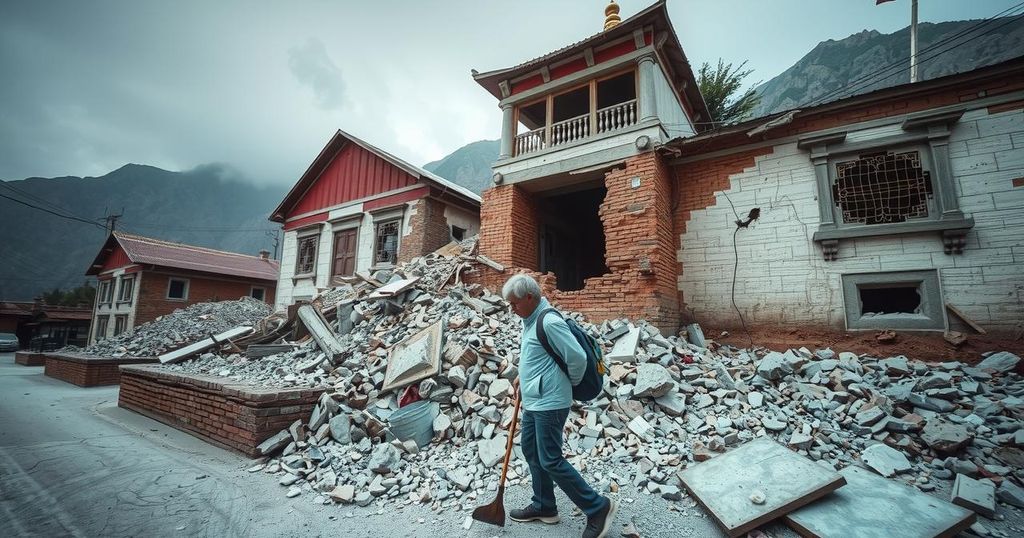On January 7, a powerful earthquake measuring 7.1 struck Tibet near the Nepal border, resulting in at least 95 fatalities and over 1,000 damaged homes. Tremors reached neighboring areas, and around 50 aftershocks followed the initial quake, prompting concerns over preparedness in such disaster-prone regions.
On January 7, a significant earthquake with a reported magnitude of 7.1 struck the Dhingri district of Tibet, close to the Nepal border, resulting in the tragic loss of at least 95 lives. According to Xinhua, the tremors were also felt in neighboring areas, including Kathmandu, the capital of Nepal, and various parts of India. Following the quake, the Chinese authorities recorded a magnitude of 6.8 for the incident, highlighting a slight discrepancy in reports.
The earthquake had a considerable impact, damaging over 1,000 residential structures. In the aftermath, the region experienced approximately 50 aftershocks, with significant tremors occurring within the hours following the initial quake. This event has raised concerns about the region’s preparedness for such natural disasters and the potential need for improved infrastructures to better withstand seismic activity.
Tibet, situated in a geologically active region, is prone to seismic events due to the tectonic movements of the Indian and Eurasian plates. Earthquakes can lead to severe casualties and destruction, as regions with vulnerable infrastructures often struggle to cope with the sudden forces unleashed during such natural disasters. The reported earthquake on January 7 underscores the continuous threat posed by seismic activity in this area, not only affecting Tibet but also impacting neighboring countries like Nepal and India.
The earthquake that struck Tibet on January 7 serves as a stark reminder of the region’s vulnerability to seismic activity. With confirmed casualties, significant property damage, and numerous aftershocks, this event emphasizes the urgent need for enhanced disaster preparedness and resilient infrastructure in earthquake-prone areas. The situation calls for comprehensive efforts from local and international agencies to provide necessary support to the affected regions.
Original Source: babel.ua






